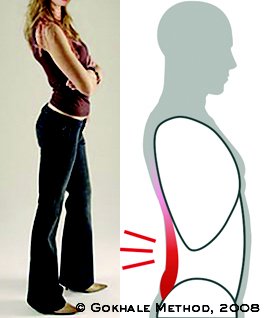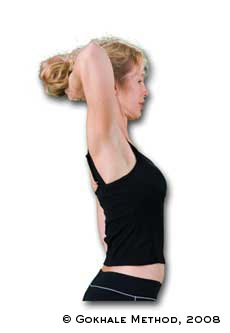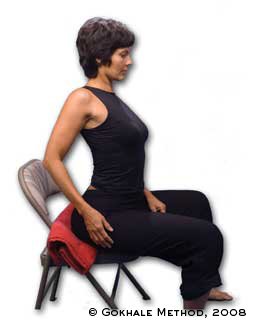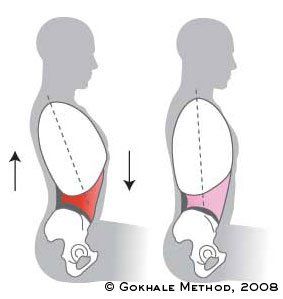5 Common Posture Myths
Myth #1
Posture is a trivial thing my mother used to pester me about only so that I would look presentable.
Actually, posture is key to optimal health. Just as a building needs a solid foundation and structure to remain strong in wind, rain, and earthquakes, so does your body. Proper alignment of the organs, bones, and muscles improves circulation and breathing, boosts the nervous system, supports organ function, promotes muscle relaxation and stress reduction, enhances athletic performance, reduces risk of injury, and accelerates healing from injury.

These young girls are getting an early start on learning posture to improve their appearance. Good posture is also key to optimal health.
Myth #2
The pelvis should be tucked to protect the back.
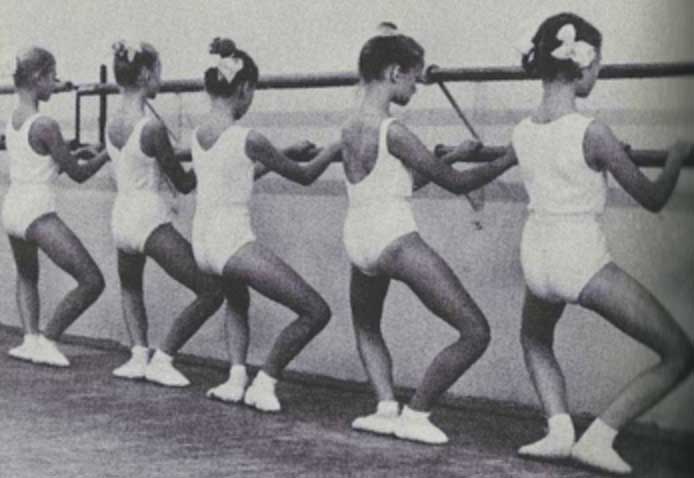
Tucking the pelvis is an unfortunate part of modern ballet training.
A great many people, from fitness instructors and dance teachers to medical professionals, make the mistake of recommending a tucked pelvis. This is discordant with our natural structure. When human beings became bipedal, the L5-S1 disc at the bottom of the spine became wedge-shaped, with the thicker end toward the front of the body. Anteverting (forward-tilting) the pelvis preserves the wedge-shaped L5-S1 space that accommodates this disc perfectly. This natural position protects against L5-S1 disc damage including bulging, herniation, and sequestration. Other structures, from the vertebrae stacked above the pelvis to the organs within the abdominal and thoracic cavities, depend on a well-positioned, anteverted pelvis as a foundation. The pelvis is the keystone to the rest of our structure and it is crucial to situate it correctly.
Myth #3
Belly breathing is good breathing; chest breathing is bad breathing.

In many alternative health circles, students are misguided to breathe only into their abdomens and not their chests.
Different kinds of breathing are needed for different kinds of movement. Belly breathing is appropriate when you have an elevated need for oxygen (as when you are running) or breath control (as when you are playing the saxophone). Otherwise, when at rest, your inhalations should primarily expand your chest cavity and lengthen your back, and only slightly move your belly. The movement in the chest and back is crucial for maintaining normal rib cage size and shape and for fostering healthy circulation around the spine.
In my experience, people who practice belly breathing to the exclusion of chest breathing, develop flaccid abdominal muscles and underdeveloped chests.
Myth #4
Chin up and chest out constitutes good posture.
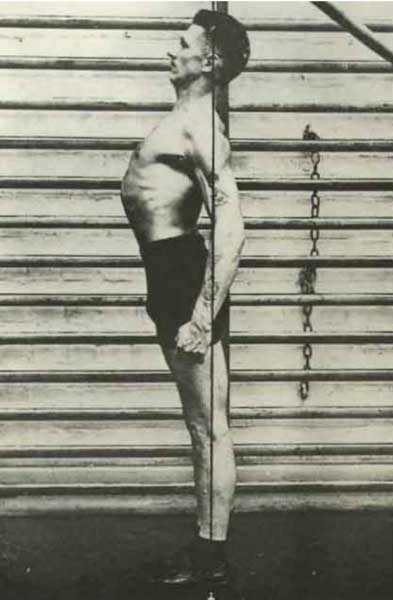
“Chin up and chest out” is a common misunderstanding of good posture.
This military stance is achieved by contracting the muscles in the neck and low back. Not only does this create tension, it exaggerates the cervical and lumbar curves, hindering circulation to these areas and potentially pinching nerve roots.
Myth #5
Good posture naturally comes about from being physically fit and active.
This idea is equivalent to driving around with a crooked axle and hoping that that the driving will straighten it out. If you have poor posture, increased activity is not an efficient way to arrive at better posture and can even result in injuries instead of improvement. It is better to focus on posture in its own right, or on posture alongside increased activity. Once you have good posture, you will get much more out of your activity; being active will maintain your muscles and your posture. Posture and fitness help each other but for people who are “out of shape,” posture is an easier, safer, and more efficient place to begin.

Running with internally rotated legs and a tucked pelvis can cause damage to all the weight bearing joints in the body.
 Rounding the back to do deadlifts can cause serious damage to all the spinal discs.
Rounding the back to do deadlifts can cause serious damage to all the spinal discs.
Have you subscribed to any of these myths? Were there any consequences? Please tell us your story...
Join us in an upcoming Free Workshop (online or in person).
Find a Foundations Course in your area to get the full training on the Gokhale Method!
We also offer in person or online Initial Consultations with any of our qualified Gokhale Method teachers.




